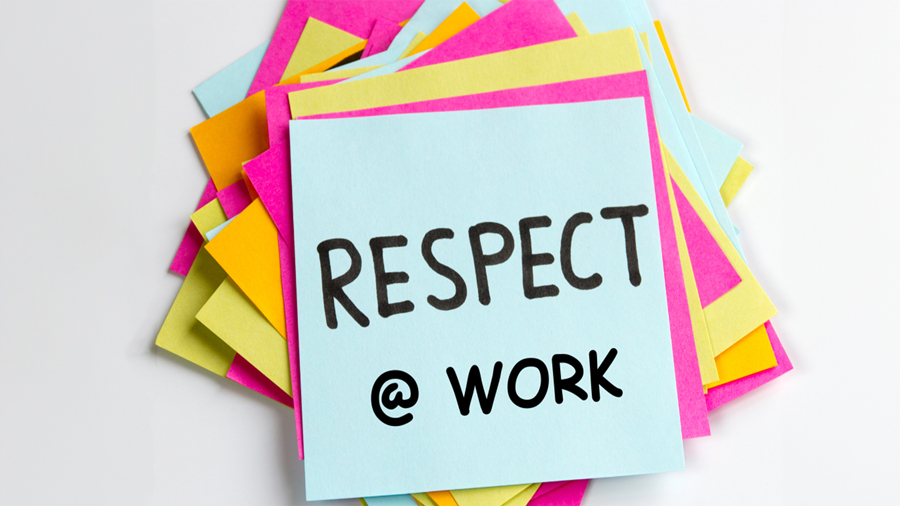The Cost of Bullying and Sexual Harassment if Not Addressed:
The bottom line is that sexual harassment and bullying, left unaddressed, is corrosive to workplaces. Costs associated with litigating cases are only a small part of what an employer must deal with. Other costs include lost production and a decline in employee morale. A workplace with bullying and sexual harassment is a poisoned workplace; it will be less efficient as affected employees devote their energies to coping with a toxic work atmosphere, which will affect profitability and drive away good employees. Interestingly, research into workplace bullying by Sandra Robinson of the Sauder School of Business at UBC found that workers who witness harassment can have a stronger urge to quit than those who experience it firsthand. This demonstrates how the effects of harassment and bullying can be felt throughout an organization.
In Canada, there has been a recognition of harassment’s pernicious effects on the health of employees. Consequently, a number of provinces have amended occupational health and safety or workplace compensation legislation to require employers to develop policies and protocols dealing with harassment (including bullying) and to provide relief to those experiencing it.
In recent years, sexual scandals involving high-profile celebrities and politicians have refocused our public conversation on sexual misconduct in the workplace, and reminded us of both how far we have come, and how far we have to go, to stem workplace sexual harassment.
The purpose of movements like #MeToo were to inspire change:
- to policies and laws.
- to how complaints of sexual violence and harassment in the workplace are handled.
- to allow victims to file complaints and be taken seriously without fear of retaliation.
- and, to improve training in the workplace.
Remember, if you have experienced sexual violence or harassment, you are not alone.
One important difference between the Anita Hill case and more recent sexual scandals is the apparently greater public willingness to believe the accounts of the women alleging sexual mistreatment, and not to rush to stereotypical judgement of them. As increasing numbers of victims come forward to relate their experiences of abuse, they have emboldened others, and created a larger space for a respectful hearing of these experiences.
As a society, we have faced certain pressing social issues and taken steps to address them: smoking is no longer permitted in most public spaces, and we no longer wink, as we did in the past, at drinking and driving. We may now, hopefully, be reaching a similar point with workplace sexual harassment and bullying. One thing is for sure. The likelihood is that fewer and fewer women (and men) will accept sexually harassing behaviour in the workplace, and will be expecting employers to be able to effectively address any such concerns.
Employers should keep in mind, as they fashion tools to combat the scourge of sexual harassment, that sexual harassment, like all harassment, is a form of bullying. One person seeks to exercise control over another; the harasser finds perverse gratification in the conquest and abasement of their target, in turning that person into an object. It is a form of dehumanization.
Common Forms of Bullying and Harassment Include:
- demanding hugs invading personal space.
- making unnecessary physical contact, including unwanted touching, etc.
- language that puts someone down and/or comments toward women (or men, in some cases), sex-specific derogatory names.
- leering at someone, or staring at or making
- comments about someone’s body (like, ‘great legs in that skirt’ or ‘it makes you look hot’).
- making suggestive or offensive comments or hints about members of a specific gender.
- verbally abusing, threatening or taunting someone based on gender.
- bragging about sexual prowess demanding dates or sexual favours.
- making offensive sexual jokes or comments.
- asking someone about their relationship, whether they had sex the night before, what kind of sex practices they like.
- making sexual requests or suggestions (such as, ‘I’d like to . making an employee dress in a sexualized or kiss you’) gender-specific way.
- making gender-related comments about someone’s dress, physical characteristics or mannerisms.
- making comments or treating someone badly because they don’t conform with sex-role stereotypes.
- showing or sending pornography, sexual pictures or cartoons, sexually explicit graffiti, or other sexual images (including online).
- sexual jokes, including passing around written sexual jokes (for example, by email).
- rough and vulgar humour or language related to gender spreading sexual rumours (including online).
- using texting, email or other social media (like Facebook) to make offensive jokes/remarks or continue pursuing a co-worker who has refused your advances at work.
- acting paternalistically, or in a way that someone thinks undermines their self-respect or position of responsibility.
- penalizing or otherwise punishing a person who refuses to comply with sexual advances (known as reprisal), such as changing the conditions of their work, undermining their work, setting onerous new tasks, etc.
Positive Workplace Culture:
Anti-harassment experts emphasize that the first line of defense against bullying and harassment is a positive workplace culture, one with core values of respect and accountability that apply to all, from the CEO on down. Such a workplace encourages and rewards acts of kindness and respect.
- Develop (and review from time to time) a code of conduct that spells out what behaviours are considered disrespectful, inappropriate or unacceptable at work. As one American attorney experienced in harassment and bullying cases put it: institute a “no jerks” rule. Do not allow an employee to be able to say that they were not aware of what is expected of them under a code of conduct. Ensure that they know that bullying and harassment will not be tolerated.
- Have a policy, and train employees in it. In Ontario, employers are legally required to develop anti-harassment policies. If you do not have one, you are currently not in compliance with the Occupational Health and Safety Act.
- Develop an internal investigation and complaint resolution mechanism, and make sure all employees are aware of, and trained in.
If you face a situation where bullying or sexual harassment has been investigated and substantiated but has not reached a threshold where termination is considered the appropriate response, HR Proactive Inc. specializes in remedial training and offers the following suggestions:
- Conduct training individually, not in a group setting where the bully will have to Work on tools that can get the bully to change their behaviour by communicating better and handling conflict in a respectful manner.
- Training is not therapy; don’t seek to understand the root causes of why the person did what they did.
- As well, this is not an opportunity for the bully to contest the findings of any investigation.
- Make sure the bully knows the particulars of the conduct found objectionable. Provide times, places, dates.
- Often bullies will be resentful and in denial of the allegations against them. Insist that the bully articulate why they are facing remedial training.
- Do not take the approach that, in effect, asks the bully to be Be direct. Tell the bully, “Your co-workers don’t feel safe around you. You need to change your behaviour at work, or there will be consequences.”
- Be straightforward and unambiguous about the consequences the bully faces. If the bully fails to amend their conduct, follow through and terminate.
Experts in harassment are virtually unanimous in recommending that, only where you feel safe doing so, confront the harasser and explicitly call out the offending behaviour: “Don’t call me ‘babe.’ That is sexual harassment.” “Stop touching me. You are standing too close. Please move away from me.” “No one likes it when you do that. Please stop that now.” “I can’t believe you just did that.”
However, if you feel any doubt about your safety, do not confront the harasser. Bring your concerns either to your immediate supervisor, or to your company’s HR department. Most jurisdictions in Canada require employers to have policies on harassment, including bullying. These policies must include procedures for dealing with complaints of harassment.
Provincial Legislation:
In 2004, Quebec amended its labour standards legislation to prohibit what it termed “psychological harassment,” which includes bullying.
In 2007, Saskatchewan expanded the definition of harassment under their Occupational Health and Safety Act to include bullying.
In 2008, the federal government revised the Canada Labour Code to mandate anti-bullying policies and education within all federal ministries.
In 2010, Ontario’s Occupational Health and Safety Act was amended to address workplace violence and harassment. Employers are now required to devise workplace violence and harassment policies and programs, and to train employees in them. As well, they must assess the risk of violence in their workplace, from whatever source.
In 2011, Manitoba made changes to its Workplace Health and Safety Act to include protection from workplace bullying, which is termed “harassment.”
In 2012, B.C. changed its workplace compensation legislation. Bullying and harassment are explicitly cited as examples of “a significant work related stressor,” which may result in a compensable claim under workers compensation legislation for a mental disorder caused by the offending conduct. In other words, a worker stressed out or made ill by harassment or bullying may now claim compensation from the Workers Compensation Board.
In 2021, requirements for employers to prevent harassment and violence in federally regulated workplaces.
Human beings are hard-wired to be sensitive to matters sexual, to those things which highlight differences between the genders. Obviously, such differences exist, but one of the biggest challenges for those seeking to create a safe and welcoming work environment is to ensure that such differences as do exist do not serve as a pretext for unequal treatment because of gender. This is one of the greatest challenges employers face in ensuring that theirs is not a workplace culture that devalues women. With recent cases suggesting that women are coming forward against their harassers as never before, employers need to move proactively to develop and encourage a respectful workplace culture with clearly identified expectations of what is acceptable and what is not, and a clearly understood mechanism for dealing with problematic conduct.
What these changes point to is a growing consensus that harassment and bullying are serious workplace concerns that employers can no longer afford to ignore. They require a proactive approach from the employer.
HR Proactive Inc. leads the way in Canadian Harassment Investigations and Respectful Workplace Training.











